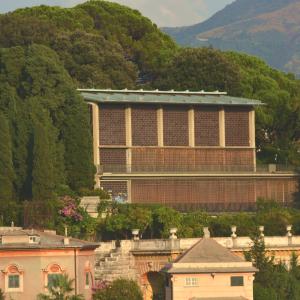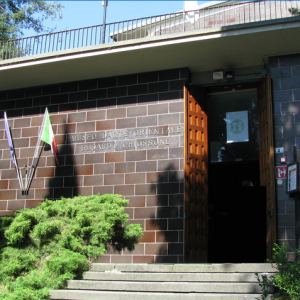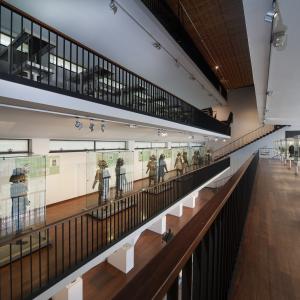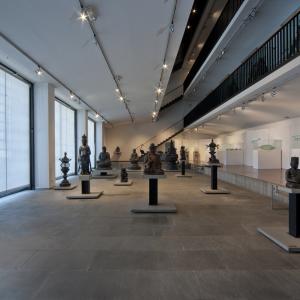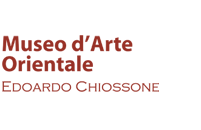The museum building was designed by the well-known architect Mario Labò (1884-1961), built between 1953 and 1967 and inaugurated in 1971. It is an extraordinary example of rationalist architecture in reinforced concrete, formed by a forepart, from which you enter the atrium and ticket office the roof of which forms a panoramic terrace; the main body, rectangular in plan, is a magnificent single-volume space with an exhibition hall on the ground floor and five cantilever galleries on the two long walls, connected by flights of stairs in wood and iron to form a continuous path. Designed specifically to accommodate the collection of oriental art, Labò’s design clearly references, in the modulation of spaces and in the choice of materials, traditional Japanese architecture.
The visit begins in the Hall, where large bronze sculptures from Buddhist temples, dating to the XVII-XVIII centuries are exhibited. Going up the staircase on the right, you enter the First Gallery, dedicated to the birth and development of Japanese civilization and artistic culture. Here we find archaeological finds from the Yayoi (ca. 300 BC - 300 AD) and Kofun (300 - 710 AD) periods as well as Chinese and Japanese ritual bronze mirrors: these works are testimony to Japan's relations with Continental East Asia and the evolution of metalworking. Display cases 3 to 7 are dedicated to Buddhist art, while the last two display cases contain works representative of the samurai culture. From here we can look out onto the gallery in front, the fifth, which we will reach at the end of the visit, and observe the thirteen large Japanese oyoroi armour, complete and equipped with weapons, as an ensemble.
Continuing we proceed up to the Second Gallery, dedicated to the development of the decorative arts in the Edo period (1600-1868). We find the wooden sculpture works of Buddhist subjects in display cases 10 and 11, while in the subsequent two display cases carved wooden theatrical masks of traditional Japanese Nō theatre are exhibited. Chinese and Japanese applied arts follow one another: cloisonné enamels, porcelain, lacquers. The final display case holds a selection of inrō and netsuke: a small case and its pendant, accessories
